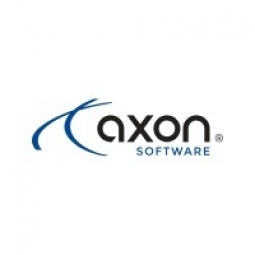Technology Category
- Sensors - Flow Meters
- Sensors - Liquid Detection Sensors
Applicable Industries
- Finance & Insurance
- Transportation
Applicable Functions
- Procurement
- Warehouse & Inventory Management
Use Cases
- Personnel Tracking & Monitoring
- Time Sensitive Networking
Services
- System Integration
- Training
About The Customer
Trevis Berry Transportation is a family-owned business based in Gilroy, California. The company has been in operation for over 82 years, hauling a variety of products including corrugated paper, egg products, wine, grapes, barrels, fruits, and vegetables all over California and the west. The company was started by Trevis Berry in the late 1930s and has been passed down through generations. The company has nearly doubled in size over the past six years, with over 42 drivers currently employed. Despite the growth, the company has managed to maintain its staff size, thanks to the efficiencies brought about by Axon Software.
The Challenge
Trevis Berry Transportation, a California-based company with over 82 years of experience in hauling various products, was facing significant operational challenges. The company was using a DOS-based system that had been in place for about 20 or 30 years, which was outdated and inefficient. The company's operations, including order entry, dispatching, invoicing, billing, and quoting, were largely manual and time-consuming. The company was losing track of many invoices due to the manual process. The invoicing process was particularly cumbersome, involving a lot of paperwork and taking up to a week and a half to bill the current week’s work. The company was also struggling with cash flow tracking, outstanding invoices, receivables, and payables tracking, which were all done manually. The company's payroll operation was also inefficient, requiring a full-time employee to manually generate checks for payroll.
The Solution
The company adopted Axon Software in 2017 to streamline its operations. The software provided automation that transformed the company's operations, from order entry and dispatching to invoicing, billing, and quoting. The company was able to email invoices to customers, improving payment speed and accuracy. The software also improved the company's cash flow and tracking capabilities, providing a clear view of outstanding invoices, receivables, and payables. The invoicing process was significantly shortened, from a week and a half to a day and a half. The software also improved the company's payroll operation, making it more of a review process than a manual data entry job. The software also allowed the company to provide a professional and consistent customer experience, with the ability to provide deep layers of backup to support all transactions. The company also used the software for inventory control.
Operational Impact
Quantitative Benefit

Case Study missing?
Start adding your own!
Register with your work email and create a new case study profile for your business.
Related Case Studies.

Case Study
Airport SCADA Systems Improve Service Levels
Modern airports are one of the busiest environments on Earth and rely on process automation equipment to ensure service operators achieve their KPIs. Increasingly airport SCADA systems are being used to control all aspects of the operation and associated facilities. This is because unplanned system downtime can cost dearly, both in terms of reduced revenues and the associated loss of customer satisfaction due to inevitable travel inconvenience and disruption.

Case Study
IoT-based Fleet Intelligence Innovation
Speed to market is precious for DRVR, a rapidly growing start-up company. With a business model dependent on reliable mobile data, managers were spending their lives trying to negotiate data roaming deals with mobile network operators in different countries. And, even then, service quality was a constant concern.

Case Study
Digitize Railway with Deutsche Bahn
To reduce maintenance costs and delay-causing failures for Deutsche Bahn. They need manual measurements by a position measurement system based on custom-made MEMS sensor clusters, which allow autonomous and continuous monitoring with wireless data transmission and long battery. They were looking for data pre-processing solution in the sensor and machine learning algorithms in the cloud so as to detect critical wear.

Case Study
Cold Chain Transportation and Refrigerated Fleet Management System
1) Create a digital connected transportation solution to retrofit cold chain trailers with real-time tracking and controls. 2) Prevent multi-million dollar losses due to theft or spoilage. 3) Deliver a digital chain-of-custody solution for door to door load monitoring and security. 4) Provide a trusted multi-fleet solution in a single application with granular data and access controls.

Case Study
Vehicle Fleet Analytics
Organizations frequently implement a maintenance strategy for their fleets of vehicles using a combination of time and usage based maintenance schedules. While effective as a whole, time and usage based schedules do not take into account driving patterns, environmental factors, and sensors currently deployed within the vehicle measuring crank voltage, ignition voltage, and acceleration, all of which have a significant influence on the overall health of the vehicle.In a typical fleet, a large percentage of road calls are related to electrical failure, with battery failure being a common cause. Battery failures result in unmet service agreement levels and costly re-adjustment of scheduled to provide replacement vehicles. To reduce the impact of unplanned maintenance, the transportation logistics company was interested in a trial of C3 Vehicle Fleet Analytics.

Case Study
3M Gains Real-Time Insight with Cloud Solution
The company has a long track record of innovative technology solutions. For example, 3M helps its customers optimize parking operations by automating fee collection and other processes. To improve support for this rapidly expanding segment, 3M needed to automate its own data collection and reporting. The company had recently purchased the assets of parking, tolling, and automatic license plate reader businesses, and required better insight into these acquisitions. Chad Reed, Global Business Manager for 3M Parking Systems, says, “With thousands of installations across the world, we couldn’t keep track of our software and hardware deployments, which made it difficult to understand our market penetration.” 3M wanted a tracking application that sales staff could use to get real-time information about the type and location of 3M products in parking lots and garages. So that it could be used on-site with potential customers, the solution would have to provide access to data anytime, anywhere, and from an array of mobile devices. Jason Fox, Mobile Application Architect at 3M, upped the ante by volunteering to deliver the new app in one weekend. For Fox and his team, these requirements meant turning to the cloud instead of an on-premises datacenter. “My first thought was to go directly to the cloud because we needed to provide access not only to our salespeople, but to resellers who didn’t have access to our internal network,” says Fox. “The cloud just seemed like a logical choice.”







